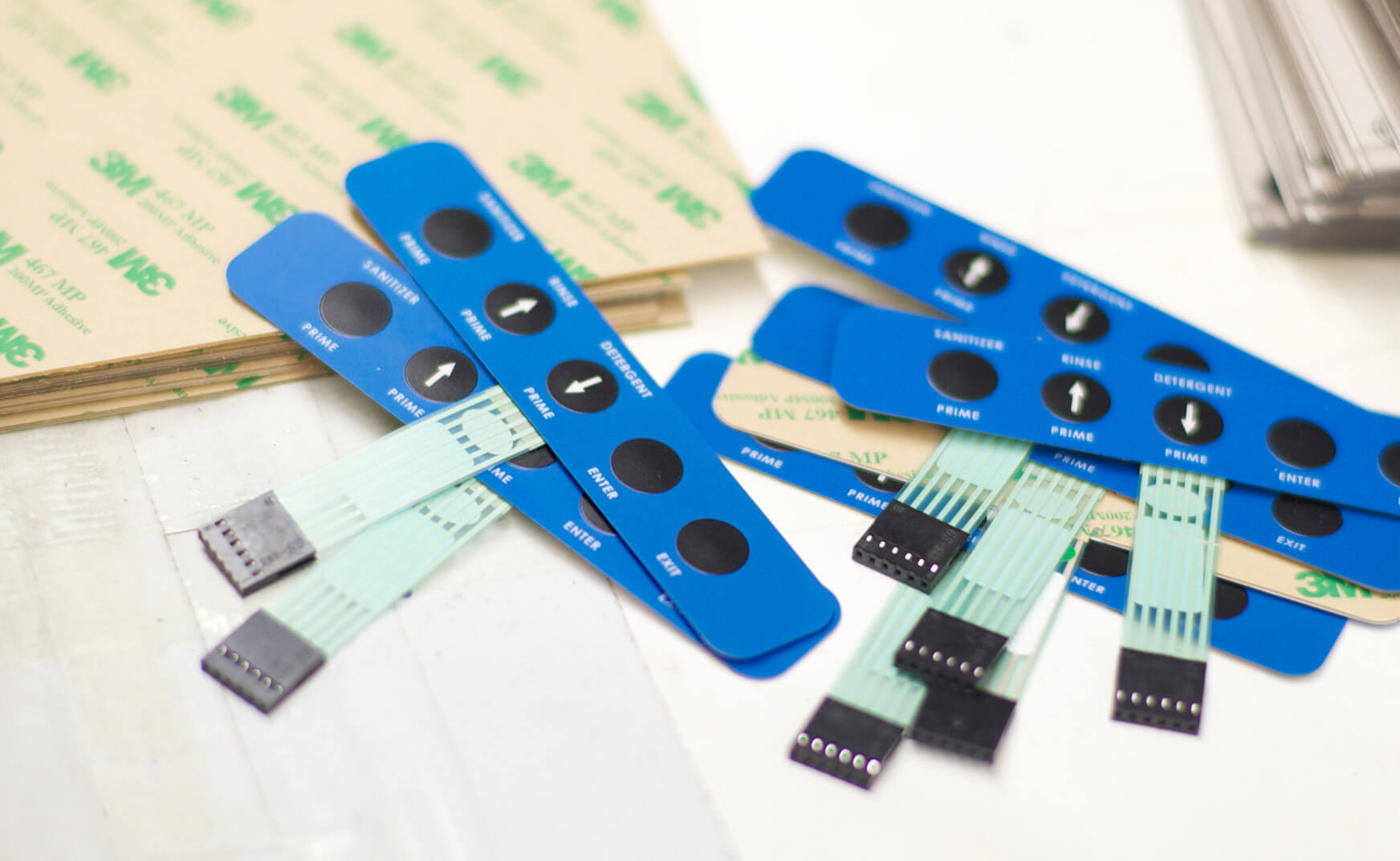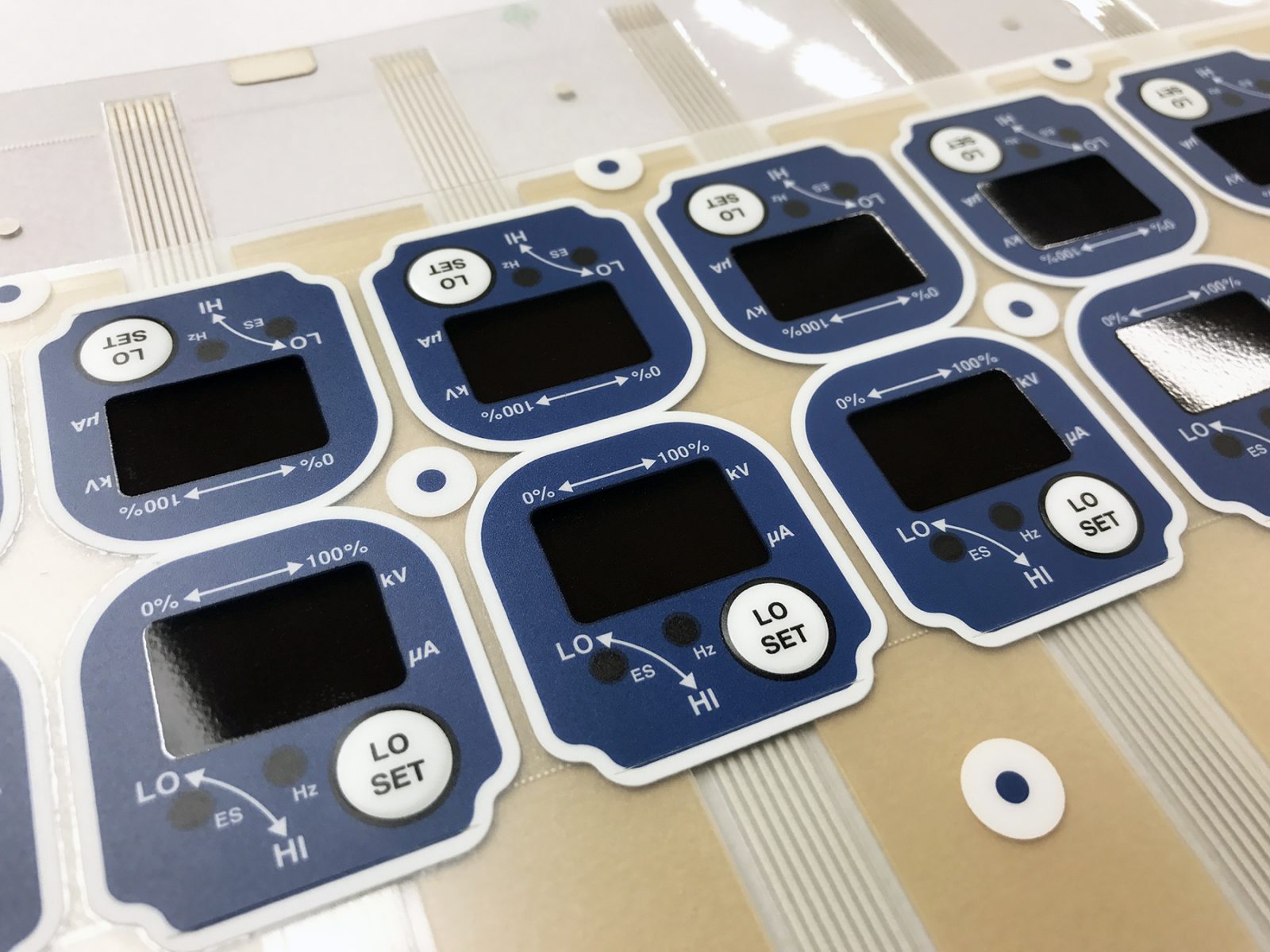How Membrane Switches Are Used in Medical Devices and Equipment
Wiki Article
Discover Just How Membrane Switches Feature and Their Function in Modern Electronic Devices
Membrane Switches represent a sophisticated assimilation of technology and design within the realm of modern-day electronics, functioning as necessary user interfaces in various tools. Consisted of multiple layers, these buttons use pressure-sensitive mechanisms to promote customer communication. Their applications cover numerous markets, from consumer electronics to clinical equipment, highlighting their versatility and value. Comprehending the intricacies of Membrane switch performance and their more comprehensive implications in boosting customer experience welcomes additional exploration into their layout, advantages, and the innovative developments forming their future in innovation.
What Are Membrane Switches?

Membrane buttons are distinguished by their toughness and resistance to environmental variables, such as dust, moisture, and severe temperatures. They can be personalized with different graphics, shades, and responsive feedback choices, improving individual experience while preserving aesthetic charm - membrane switches. The unification of published circuits enables for seamless integration into gadgets, enhancing general performance.
The flexibility of Membrane switches is evident in their ability to sustain both complicated and easy control functions. They can incorporate attributes such as LED indications and touch-sensitive modern technology, catering to particular user demands. As technology remains to advance, Membrane Switches continue to be necessary for allowing effective and instinctive interface, thus playing a pivotal duty in the improvement of modern-day electronic tools.
Parts of Membrane Buttons
Membrane buttons are composed of numerous vital parts that work with each other to produce a reliable and functional interface. The primary components consist of the visuals overlay, sticky layer, spacer layer, and conductive traces.The visuals overlay acts as the customer interface, usually printed on a versatile substratum such as polyester or polycarbonate. This layer not just offers aesthetic charm but additionally includes responsive comments, visual hints, and safety attributes. Underneath the visuals overlay exists the adhesive layer, which secures the button to the device and guarantees sturdiness versus ecological stress and anxieties.
The spacer layer is essential for keeping the necessary void in between the visuals overlay and the circuit layer. When stress is used, this void enables for the activation of the button. The conductive traces, normally made from silver or carbon, develop the electrical paths that complete the circuit when the button is engaged.
Additionally, a backing layer may be included for architectural support and insulation. These parts collaborate effortlessly, guaranteeing that Membrane switches are both resistant and user-friendly, making them indispensable in various contemporary digital applications.
Just How Membrane Switches Work
How do Membrane Switches function properly within digital gadgets? Membrane Switches operate on the concepts of pressure-sensitive innovation, using a layered building that includes graphic overlays, sticky layers, and conductive aspects. When an individual uses stress to the switch, the top layer flaws, enabling the conductive aspects beneath to make call and finish an electric circuit. This action triggers the preferred feature within the gadget.The design of Membrane switches is crucial for their efficient operation (membrane switches). The layers are thoroughly crafted to supply tactile feedback, toughness, and resistance to ecological variables such as wetness and dust. The addition of domes-- small, elevated locations within the switch-- boosts responsive YOURURL.com reaction, offering customers with a visible click sensation upon activation
Additionally, Membrane buttons can be personalized in terms of dimension, form, and graphics, making them appropriate for numerous applications. They are frequently used in control panels, medical devices, and consumer electronics as a result of their sleek style and reliability. In general, the effective performance of Membrane buttons is critical in enhancing customer communication and guaranteeing seamless operation in contemporary electronic tools.

Applications in Modern Devices
Using their one-of-a-kind design and performance, Membrane switches have actually YOURURL.com come to be integral components in a variety of modern electronic gadgets. These flexible interfaces are used in customer electronic devices, commercial tools, clinical tools, and automobile controls, offering seamless individual interaction.In consumer electronic devices, Membrane buttons are commonly found in devices like microwaves, washing machines, and other house devices, where they enable intuitive control with a streamlined profile. Their low-profile style helps with combination into small gadgets, improving aesthetic appeal without compromising functionality.
In industrial applications, Membrane Switches work as control panels for machinery, providing resilience and resistance to severe environments. Their capacity to hold up against moisture and impurities makes them suitable for use in manufacturing and handling industries.
Clinical gadgets also profit from Membrane buttons, which are made to be simple to clean and keep, making sure health in clinical setups. They are typically used in analysis devices, client surveillance systems, and mobile medical tools, where integrity is critical.
Advantages of Membrane Switches
Among the Read Full Article vital benefits of Membrane switches is their convenience, which allows them to be tailored for a selection of applications across numerous industries. These buttons can be created in various sizes and shapes, suiting distinct item demands while giving seamless assimilation into devices. Their slim profile enables a compact and sleek design, often boosting the aesthetic charm of digital products.An additional substantial advantage is their toughness - membrane switches. Membrane switches are generally immune to dust, wetness, and chemicals, making them excellent for severe environments. This strength extends their life expectancy contrasted to traditional mechanical switches, minimizing the demand for frequent replacements
Furthermore, Membrane Switches deal cost-effectiveness. The manufacturing process involves printing modern technologies that minimize production expenses, especially for huge runs. This price, incorporated with low maintenance demands, makes them an eye-catching alternative for manufacturers.

Final Thought
Finally, Membrane Switches stand for a significant development in interface innovation within contemporary electronics. Their layered building, pressure-sensitive operation, and versatility to various applications emphasize their importance throughout multiple sectors. The sturdiness and environmental resistance of Membrane Switches even more improve their charm, making them a favored choice for producers looking for reputable and adjustable remedies. As the demand for resistant and instinctive interfaces remains to grow, the role of Membrane buttons fit user experience will unquestionably broaden.Membrane Switches represent a sophisticated assimilation of innovation and design within the world of contemporary electronics, serving as essential user interfaces in numerous tools.In the world of contemporary electronic devices, Membrane Switches serve as critical parts that assist in user interaction with tools. As innovation proceeds to develop, Membrane Switches stay crucial for enabling efficient and intuitive individual interfaces, thereby playing a critical duty in the improvement of modern-day digital gadgets.
Just how do Membrane Switches feature efficiently within electronic tools? On the whole, the effective performance of Membrane switches is essential in boosting user communication and making certain seamless procedure in modern-day digital devices.
Report this wiki page